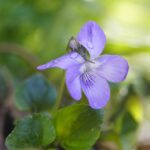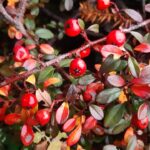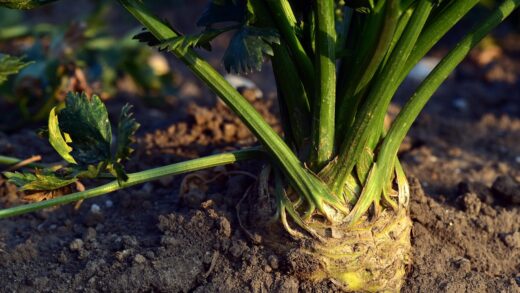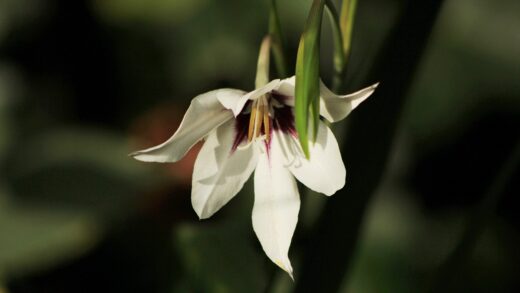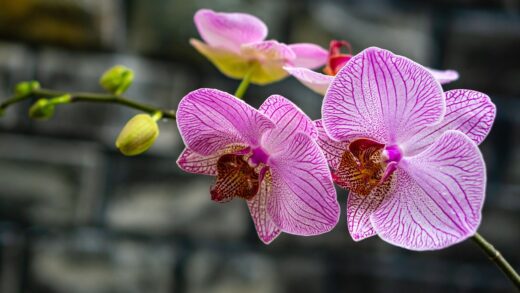Anemone hepatica, commonly known as liverwort, is a captivating early spring bloomer that brings a delicate charm to any woodland or shade garden. Its jewel-like flowers, appearing in shades of blue, purple, pink, or white, emerge even before the distinctive three-lobed leaves fully unfurl, making it one of the first heralds of the changing season. Native to the deciduous forests of the Northern Hemisphere, this small herbaceous perennial thrives in conditions that mimic its natural habitat. Successful cultivation hinges on understanding and replicating these specific environmental needs, from soil composition to light exposure. Providing the right care ensures these long-lived plants will establish and flourish, rewarding the gardener with their understated beauty for years to come.
The foundation of successful liverwort cultivation lies in the soil. These plants demand a well-drained, humus-rich substrate that remains consistently moist but never waterlogged. An ideal soil mix would be friable and loose, allowing the fine roots to penetrate easily and access necessary moisture and nutrients. It is crucial to avoid heavy clay soils that retain excessive water, as this can quickly lead to root rot, a condition to which Anemone hepatica is particularly susceptible. Amending the planting area with generous amounts of leaf mold, compost, or other well-decomposed organic matter is essential to create the perfect growing medium.
Proper siting is another critical factor for the long-term health of liverworts. They are naturally understory plants, accustomed to the dappled sunlight that filters through the canopy of deciduous trees. Therefore, a location that provides partial to full shade is ideal, especially during the hot afternoon hours of summer. Morning sun is generally well-tolerated and can even encourage more prolific flowering, but intense, direct sunlight can scorch the delicate foliage and stress the plant. Planting them on the north or east side of a structure or beneath taller shrubs and trees can effectively provide the required protection.
Anemone hepatica is a plant that appreciates consistency in its environment. It does not respond well to frequent disturbance or changes in its growing conditions. Once a suitable location is found and the plant is established, it is best to leave it undisturbed for many years. This allows the root system to mature and the clump to expand gradually. This preference for stability is a key aspect of its character, making it a patient gardener’s reward rather than a plant for constant tinkering and redesign.
Understanding the growth cycle
The annual growth cycle of Anemone hepatica is a key to understanding its care requirements throughout the year. The cycle begins in very early spring, often when snow is still on the ground, with the emergence of the flower buds. These flowers open before the new leaves appear, providing a vital early nectar source for pollinators. This early flowering is a remarkable adaptation to its woodland habitat, allowing the plant to complete a significant part of its reproductive cycle before the tree canopy above leafs out and reduces light availability.
Following the flowering period, the new, glossy, three-lobed leaves unfurl and will persist throughout the growing season. These leaves are responsible for photosynthesis, gathering the energy the plant will need for the following year’s blooms and for its survival through winter dormancy. During this period, from late spring through summer, it is crucial that the plant receives adequate moisture and is not subjected to drought stress. The health and vigor of the foliage during this time directly impact the quality and quantity of flowers the following spring.
As autumn approaches, the leaves of many Anemone hepatica varieties will remain evergreen or semi-evergreen, often taking on attractive bronze or purple tints. They provide winter interest in the garden and offer some protection to the crown of the plant. The flower buds for the next spring are formed during the previous summer and autumn, lying dormant just at the soil surface, ready to emerge at the first hint of spring. This highlights the importance of year-round care, as the preparations for next year’s display are made months in advance.
The plant enters a state of dormancy during the coldest parts of winter. While the foliage may persist, active growth ceases, and the plant conserves its energy below ground in its root system. In its native habitat, a blanket of snow provides excellent insulation, protecting the shallow roots and crown from extreme temperature fluctuations and desiccating winds. Replicating this protection in a garden setting, especially in colder climates or areas with inconsistent snow cover, is a vital part of its winter care regimen.
Soil and site preparation
Proper soil preparation is arguably the most critical step in ensuring the long-term success of Anemone hepatica. The goal is to replicate the rich, organic-laden floor of a deciduous forest. Before planting, the selected area should be thoroughly worked to a depth of at least 20-30 centimeters to loosen any compaction. This process improves drainage and aeration, which are vital for preventing root diseases. It is during this stage that soil amendments should be incorporated.
The choice of organic matter is important for creating the ideal soil structure and nutrient profile. Leaf mold, particularly from deciduous trees like oak or beech, is considered the gold standard as it most closely mimics the natural litter on the forest floor. Finely screened compost, well-rotted manure, or peat-free coir can also be used effectively. These materials not only provide slow-release nutrients but also improve the soil’s ability to retain moisture while allowing excess water to drain away, a balance that is perfect for liverworts.
The soil pH should ideally be neutral to slightly alkaline. Anemone hepatica often grows in areas with underlying limestone, and it appreciates a certain level of calcium in the soil. If the garden soil is naturally acidic, adding a small amount of dolomitic lime or crushed oyster shells can be beneficial. A simple soil test can provide valuable information about the existing pH and nutrient levels, allowing for more precise amendments to create the perfect environment for these plants to thrive.
When preparing the planting site, consider the long-term companions for liverworts. They associate beautifully with other early spring ephemerals and shade-loving perennials such as trilliums, ferns, hostas, and cyclamen. Planting them in a community of plants with similar requirements creates a more stable and self-sustaining micro-ecosystem. This also helps in maintaining soil moisture and temperature, further benefiting the sensitive root systems of the liverworts.
Mulching and ongoing maintenance
Mulching is a highly beneficial practice for the care of Anemone hepatica. A layer of organic mulch applied around the plants helps to conserve soil moisture, suppress weed growth, and regulate soil temperature, protecting the shallow roots from both summer heat and winter cold. The best mulch is one that mimics the natural forest floor, such as shredded leaves or fine bark chips. This layer should be applied in a depth of about 2-3 centimeters, being careful to keep it from directly covering the crown of the plant to prevent rot.
As the organic mulch breaks down over time, it continues to enrich the soil with humus, maintaining the friable and nutrient-rich conditions that liverworts prefer. This slow decomposition provides a steady, gentle supply of nutrients, which is far more beneficial than periodic applications of strong chemical fertilizers. The mulch should be replenished annually, typically in the autumn, to maintain its depth and effectiveness. This yearly addition of organic matter is a key part of long-term maintenance.
Weed control is another important aspect of ongoing care. Because Anemone hepatica are small, slow-growing plants, they can easily be overwhelmed by more aggressive weeds. The use of mulch significantly reduces weed germination, but any that do appear should be removed by hand promptly and carefully. It is important to avoid deep cultivation with tools around the plants, as this can damage their shallow and delicate root systems. Gentle hand-weeding is the safest and most effective method.
General observation is a crucial part of maintenance. Regularly inspecting the plants for any signs of stress, disease, or pest activity allows for early intervention. Check the foliage for discoloration or damage and monitor the soil moisture levels, especially during dry periods. Although they are relatively low-maintenance once established, this vigilance ensures that any potential problems are addressed before they become serious, safeguarding the health and longevity of these precious garden gems.
Long-term care and establishment
Patience is a virtue when cultivating Anemone hepatica, as they are slow to establish and reach their full potential. It can take several years for a newly planted specimen to form a respectable clump and begin to flower profusely. During this initial establishment period, consistent care, particularly with regard to watering, is paramount. The soil should never be allowed to completely dry out, especially during the first year after planting.
Once established, Anemone hepatica becomes a very resilient and long-lived garden plant, capable of gracing the garden for decades. As the clump matures, it will slowly expand in size. Unlike many perennials, it does not require frequent division to maintain its vigor. In fact, it is best left undisturbed for as long as possible. Division is typically only necessary for propagation purposes or if the center of a very old clump begins to die out, which is a rare occurrence.
Over the years, the primary task for the gardener is to maintain the quality of the soil. This involves the annual top-dressing with leaf mold or compost, as mentioned earlier. This simple act replenishes the organic matter that the plants consume and that naturally breaks down over time. It ensures that the soil structure remains loose and the nutrient levels are sufficient to support healthy growth and abundant flowering in the years to come.
As a long-term inhabitant of the garden, consider its place within the evolving landscape. Ensure that taller, more vigorous neighbors do not encroach upon it and shade it out excessively. The dappled light conditions it enjoyed when first planted should be maintained. This might involve selective pruning of overhead tree branches or managing the spread of nearby shrubs to ensure the liverwort continues to receive the balance of light and shade it needs to flourish for generations.
Special considerations for container cultivation
Growing Anemone hepatica in containers is a viable option, particularly for gardeners with limited space or unsuitable soil conditions. This method also allows for closer appreciation of the delicate flowers and provides better control over the growing environment. The key to success in pots is selecting the right container and potting medium. A terracotta or clay pot is often preferred as its porous nature allows for better air exchange and helps prevent the soil from becoming waterlogged. Ensure the pot has ample drainage holes.
The potting mix for container-grown liverworts must be exceptionally well-draining yet moisture-retentive. A standard commercial potting mix is often too dense and should be amended. A good recipe involves mixing equal parts of a loam-based compost, horticultural grit or perlite for drainage, and leaf mold or fine orchid bark for structure and organic content. This creates a mix that mimics the ideal woodland soil, providing the perfect balance of moisture, aeration, and nutrients for the plant’s root system.
Watering is more critical for container-grown plants as they can dry out much faster than those in the ground. The soil should be monitored regularly and watered thoroughly whenever the top few centimeters feel dry to the touch. It is best to water until it runs freely from the drainage holes, ensuring the entire root ball is moistened. However, the pot should not be left standing in a saucer of water, as this will lead to saturated conditions and root rot.
Plants in containers will also require more attention to feeding, as the nutrients in the limited volume of potting mix are depleted more quickly. A gentle, slow-release fertilizer or a diluted liquid feed can be applied in the spring as new growth begins. A balanced fertilizer or one formulated for woodland plants is ideal. It is important to avoid over-fertilizing, which can harm the plant. Repotting every few years into fresh potting mix is also necessary to replenish nutrients and provide more space for the growing roots.







